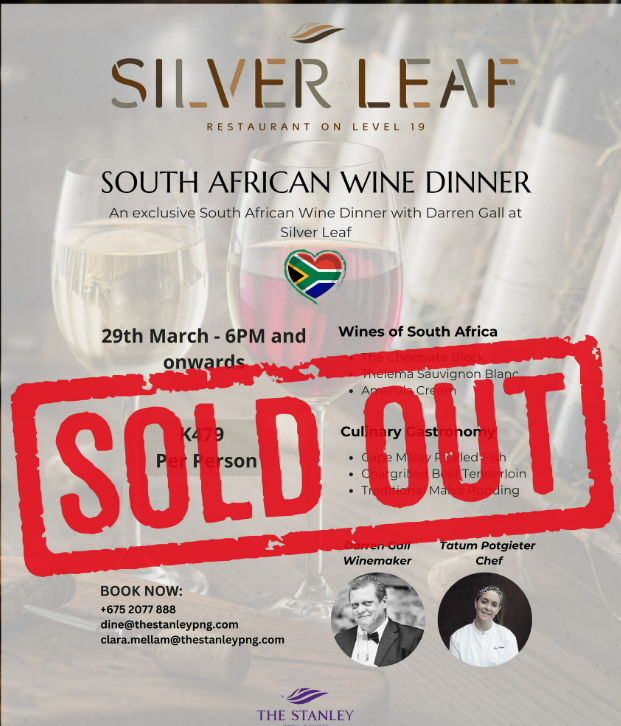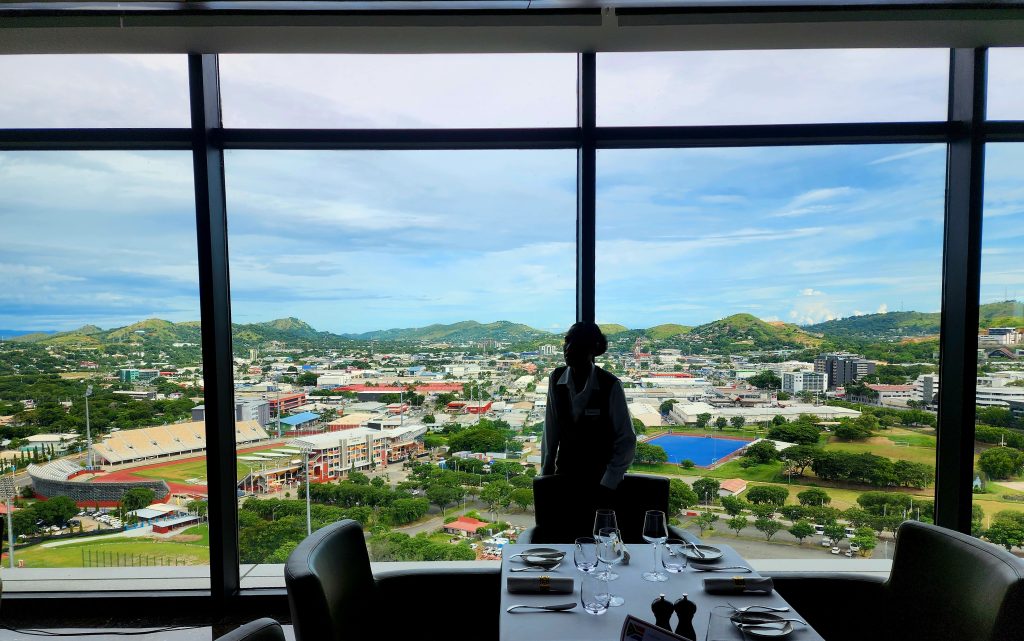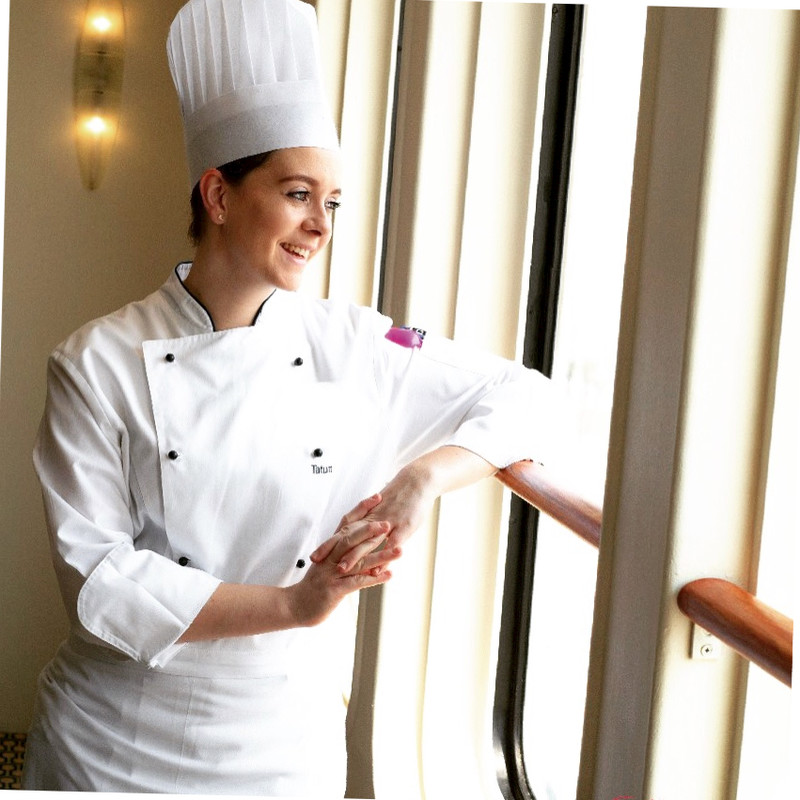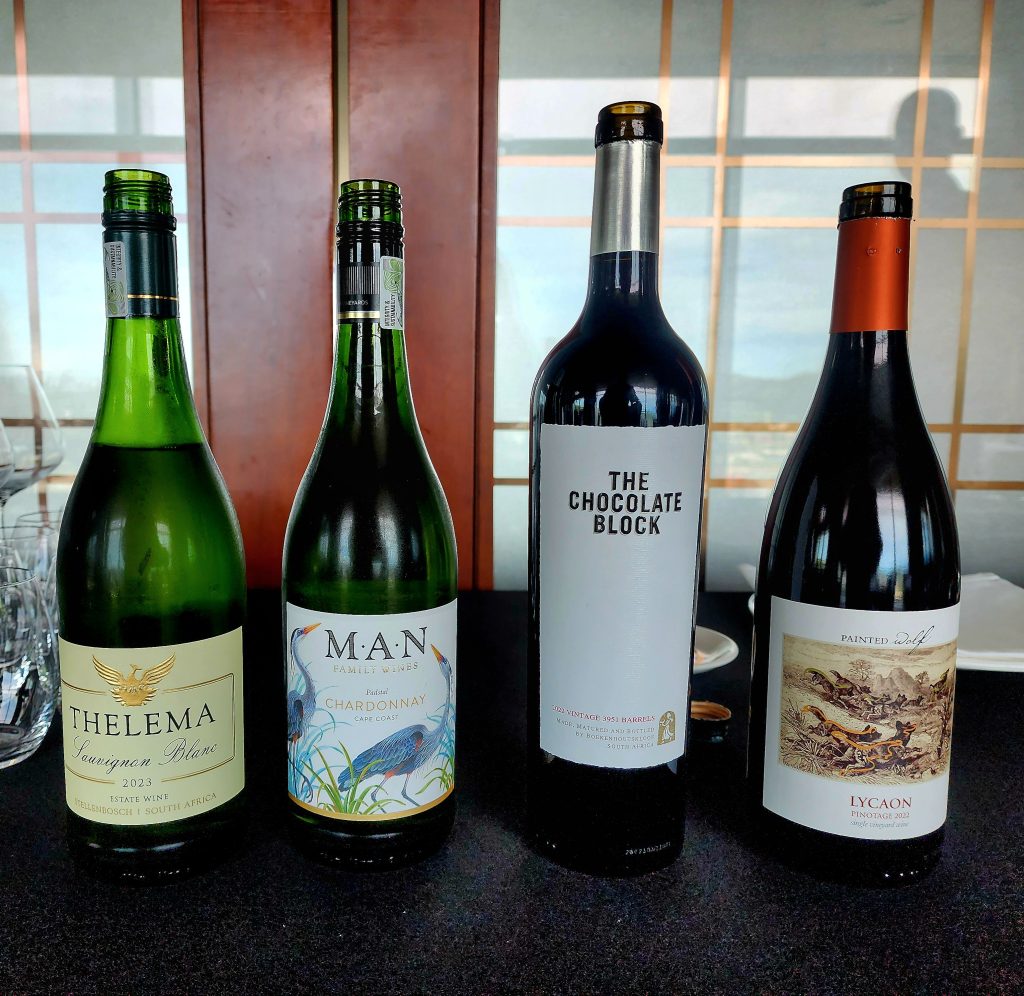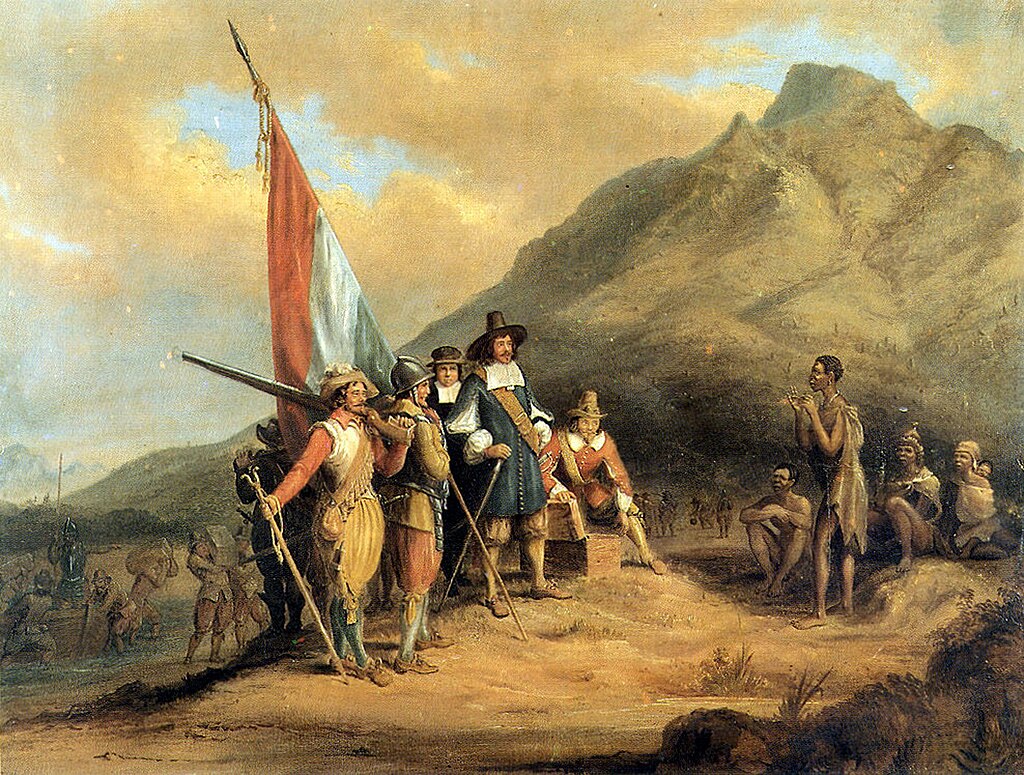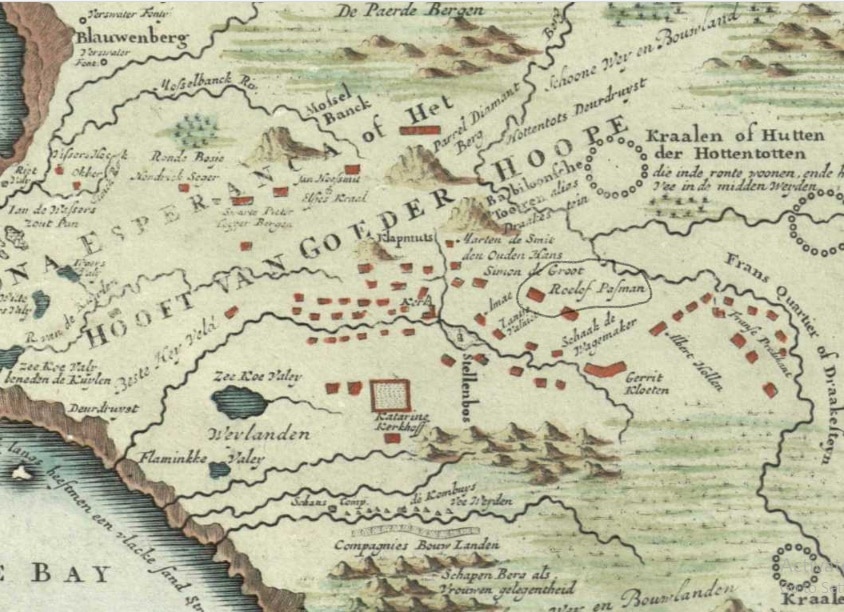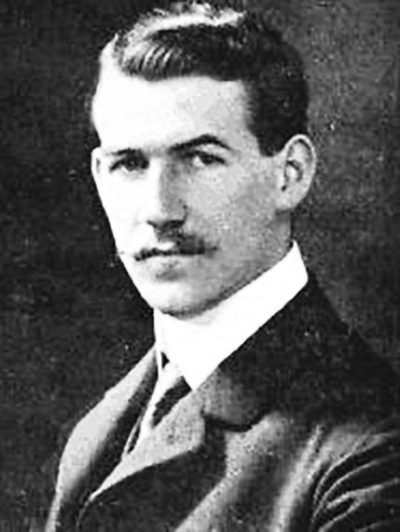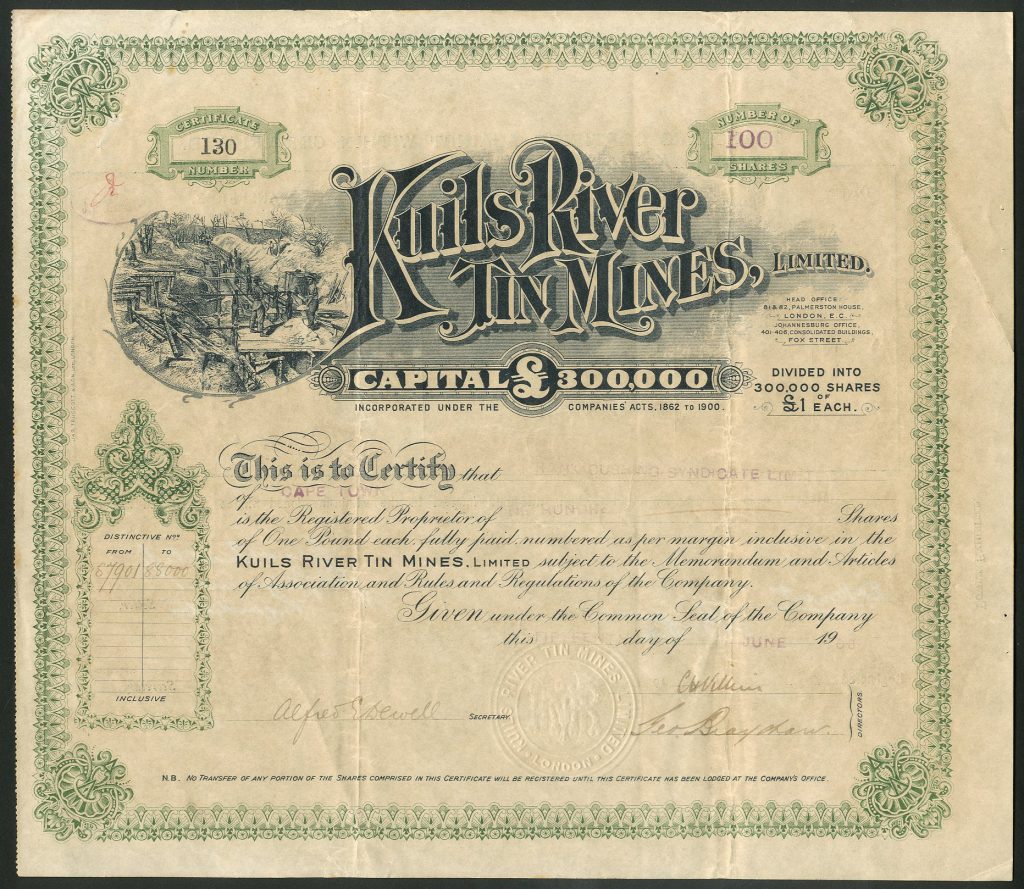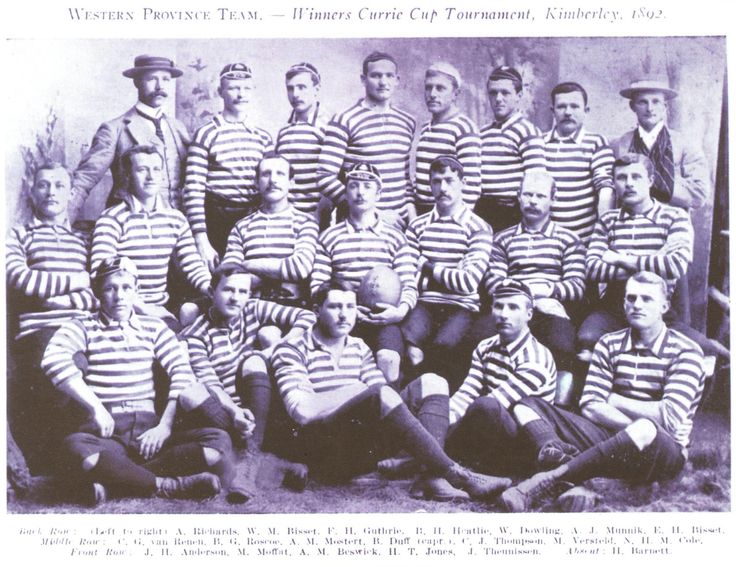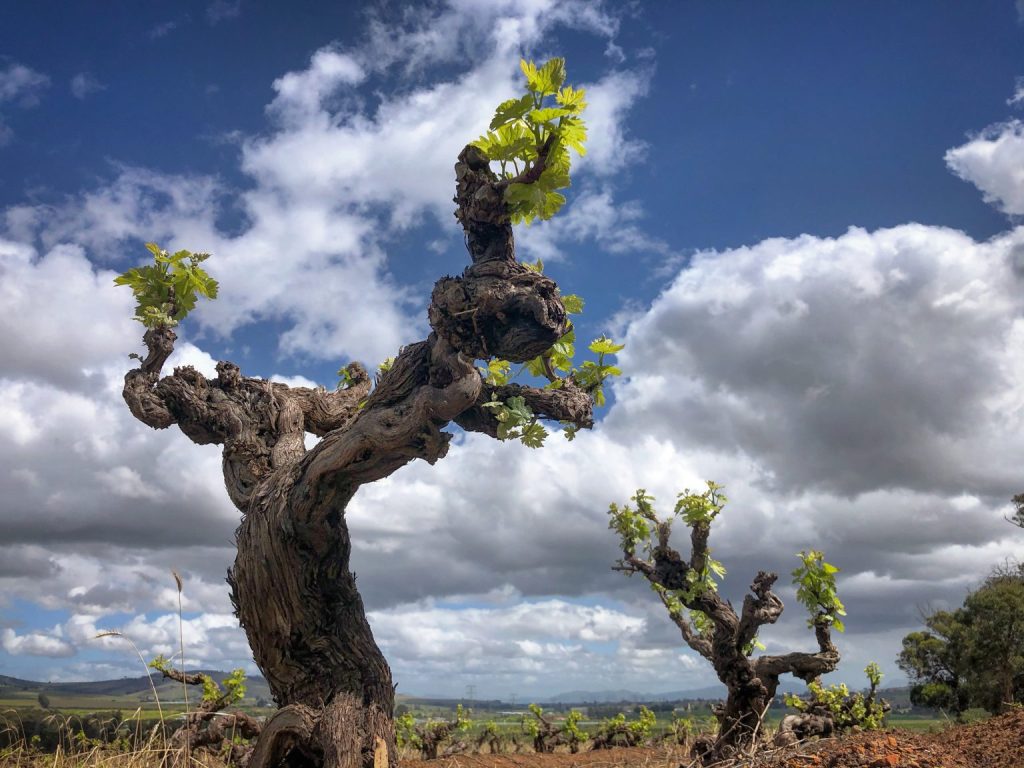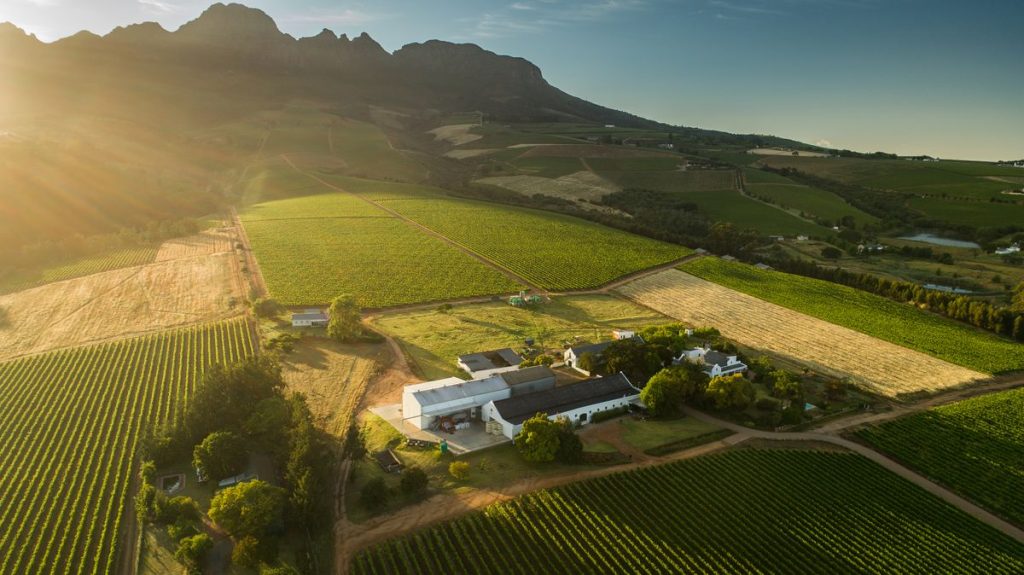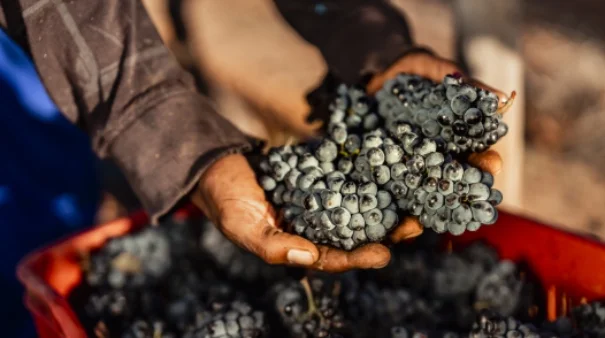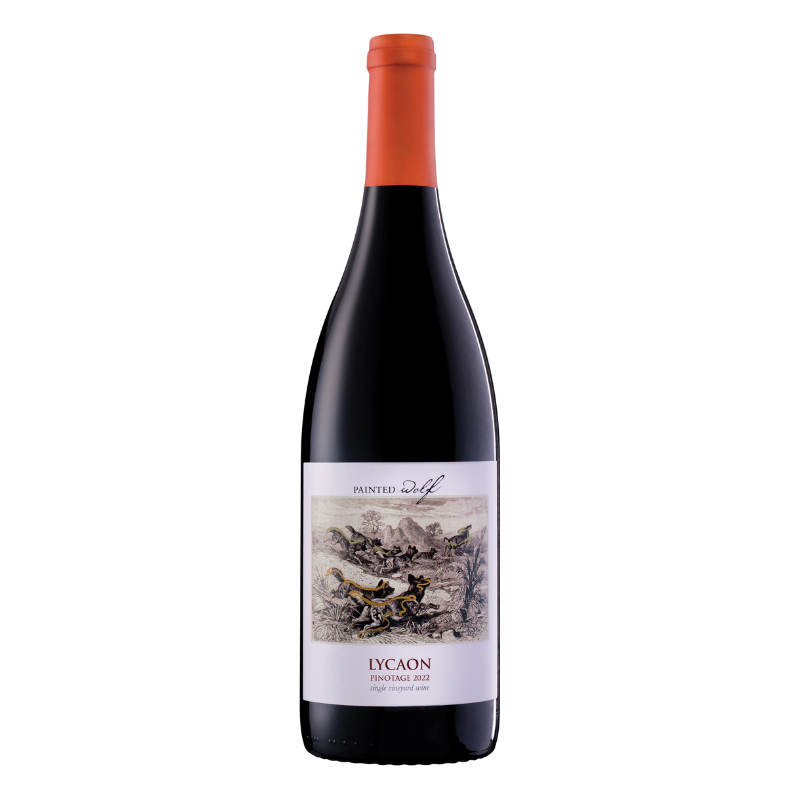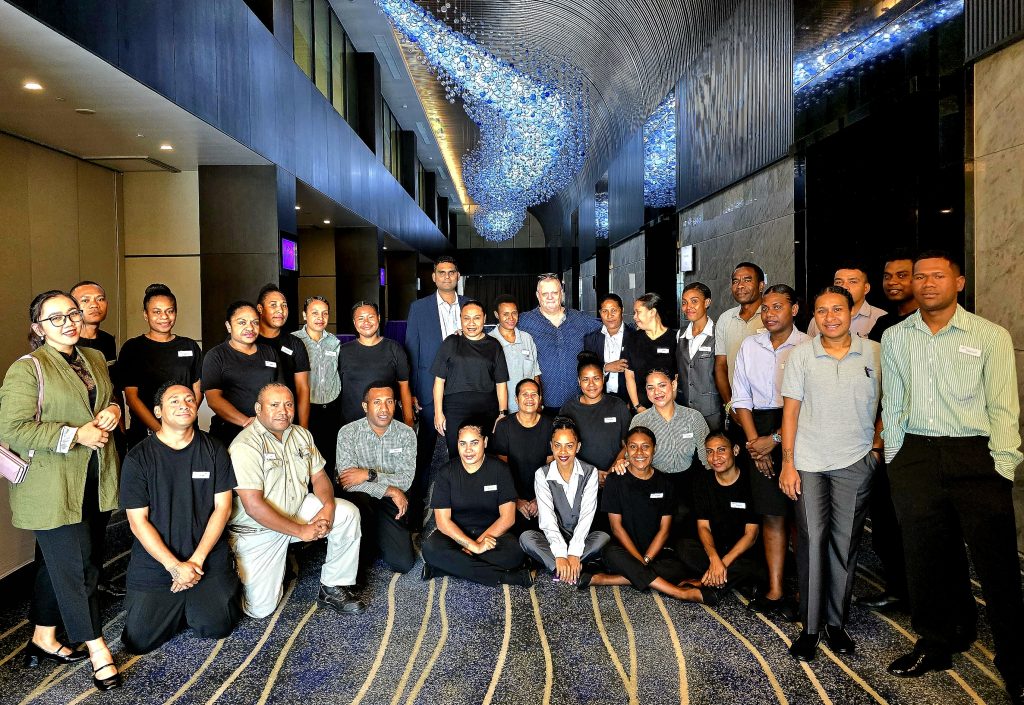From Perold’s Garden to Papua New Guinea
An Afrikaner in Papua New Guinea
I was delighted to find myself in Papua New Guinea on the weekend, one of the most disparate places on earth, with multiple climates and remote terrains, a myriad of different tribes, and a seemingly inexhaustible list of newly discovered plants and species. It’s as if every time a scientist wanders into the jungle, another species is found, if not several.
The island is also one of the most culturally diverse places on the planet. It is estimated that more than 7,000 cultural groups exist in Papua New Guinea, with most groups having their own languages, lore, and traditions.
Silver Leaf
I was here as a guest of the impressive Stanley Hotel and Suites, the most luxurious property in the island’s capital of Port Moresby. Here to host a wine-pairing dinner and train the wonderful local staff. The dinner was a South African affair, the hotel is truly fortunate to have as its Sous Chef, the exceptionally talented Afrikaner, Tatum Potgieter.
The menu consisted of traditional Afrikaans dishes, starting with Vetkoek, (fat cake) a sort of savoury doughnut, accompanied by some Biltong (air-cured meat) pate, along with Roosterkoek, (flame grilled damper) & salted butter.
The first course was a delicious Cape Malay pickled fish and mini fruit Loaves, paired to a Thelema Sauvignon Blanc 2023. The fish, with its mild curry, was exceptional and a lovely pairing with this elegant Sauvignon Blanc.
The second course was Pap & Chakalaka paired with a Man Family Chardonnay 2024. Pap is a lightly curried vegetable stew and chakalaka is a spicy South African vegetable relish, traditionally served with bread, pap, stews, or curries. The spice was mild, and the vegetable flavours went well with this lighter, cleaner style of Chardonnay.
Chocolate Block
The main course was ‘Young Grade’ Beef Tenderloin and Braai Broodjie, served with Patat and a Monkeygland Sauce. In South Africa, “young grade” beef, is typically animals under 18 months old, it is often classified as Class A and is known for its tenderness. A Braai Broodjie is basically a tomato and cheese toastie, cooked on an open flame, whilst patat is Afrikaans for sweet potatoes.
Despite its name, no monkeys were harmed in the making of this sauce, and none will be performing as Castrati at the local opera house. The main ingredients are chutney and tomato sauce, with the addition of onions, vinegar, garlic, and Worcestershire sauce.
The final blend is a delightful sweet-and-sour condiment that goes perfectly with cooked meats and fried foods.
The wine was The Chocolate Block, 2023 a blend of Syrah (74%); Grenache (11%); Cabernet Sauvignon (8%); Cinsault (6%) and Viognier (1%). The wine is produced at the Boekenhoutskloof Estate in Swartland.
The “Chocolate Block” wine’s name is a playful reference to the potential chocolate notes that can develop in well-aged Grenache, and it was suggested by an Australian wine merchant friend, Tony Allen, who also felt it captured the wine’s dark, brooding character and touch of fruitful richness.
2023 is medium-bodied and rich with delightful ripe berry fruit and exotic spices. There is a lot of whole-berry fermentation here giving the wine a lifted note of juicy, fruity character mid-palate, raspberry, plum, then gingerbread, pan spices, clove and sage, all wrapped up in fine tannin and refreshing acidity.
Painted Wolf
The cheese course consisted of Gouda, Camembert, Chilli Bites, Cornichons & Tuisgemaakde Appelkoos Konfyt, (house-made Apricot Jam).
The wine, Painted Wolf Lycaon Pinotage 2022
In 2006, Emma and Jeremy Borg decided to create a wine company with two main aims – to raise money to build a more hopeful future for endangered African wild dogs and to allow Jeremy to pursue his ambitions as a winemaker, which he has done with great determination and flair.
The Fruit for this wine comes from a certified single vineyard on Silk Bush farm in Breedekloof. The site is west to the northwest facing and is one of the highest Pinotage vineyards in the Cape at 700 to 750 meters above sea level. The cooling influence of this altitude results in a long ripening season for the grapes and each season it is some of the last picked Pinotage in the country. Yields are naturally low at around six tons per hectare. The vineyard is rated among South Africa’s top Pinotage sites.
The Boer Bastard
For me, Pinotage has always been a bit of a bastard of a variety. A unique grape bred to better behave in the vineyard, as a result, it’s an absolute miscreant in the winery. The grape is a hybrid of two varieties, Pinot Noir and Cinsault (known in South Africa then as Hermitage).
Mr. Perold’s four forgotten seeds
Abraham Izak Perold, (known as Izak) was born on 20 October 1880, in Cape Town South Africa, the son of wine farmers Isaac Stephanus Perold, and his wife Johanna Helena Brink. He studied Mathematics, Physics and Chemistry at Victoria College in Stellenbosch. As a student, he took the initiative in founding the Victoria College Scientific Society in December 1900. On the 7th of March1901, he read his new paper before its members, it was titled, “Plant food and its introduction into the soil”.
Izak went to Germany and obtained his PhD in Halle, Germany (Chemistry, summa cum laude, 1904). He then explored France and toured Europe. (He returned with a good understanding of French, Spanish, Portuguese and Italian to go along with his excellent German.)
In 1906, Perold accepted the position of ‘Assistant Professor of Chemistry’ at the University of Cape Town, but soon after left for Europe once again. This time around, he was sent by the South African government to explore potentially suitable grape varieties. He returned with one hundred and seventy seven varietals, which form the core of a collection at the Welgevallen Experimental Farm of Stellenbosch University that exists to this day.
Under Perold, the Department of Viticulture and Oenology was formed at Stellenbosch University in 1917, and he became its first professor. In 1928, he was appointed Dean of the Faculty of Agriculture. He began a scientific examination of local vines and research into their origins and the best growing conditions. As a result, he travelled widely and regularly to visit viticultural areas in other countries.
In 1910, Perold discovered the table grape cultivar, Barlinka, in Algeria. He brought it to South Africa and developed it locally as a valuable grape for export. After 1928, Izak Perold served as chief wine expert for South Africa’s central winegrowers’ co-operative KWV (Kooperatiewe Wijnbowers Vereniging van Zuid Afrika). He passed away in 1941.
Perold’s wife (Martel), lived on to be over one hundred years old and donated a sizeable amount of money to Stellenbosch University, in memory of her husband. Today, one of the buildings of the Department of Agriculture, on the University campus, is dedicated to him.
Welgevallen Experimental Farm
In 1925, Abraham Izak Perold decided he wanted to create something new, he wanted to capture the complex, expansive and eminently attractive aromas, and flavours of the best red Burgundy wines, from vines grown in his native South Africa.
However, to do that was going to prove extremely difficult, the Pinot Noir grape from which these wines are produced was known at the time to be notoriously difficult to grow outside of its beloved Burgundy, and it being largely unsuitable for the growing conditions in South Africa. Yet Izak had a bold plan, one that involved taking the delicate, temperamental, susceptible Pinot Noir variety and crossing it with the robust and disease-resistant, locally grown Hermitage, (Cinsault) He would take seeds from material already thriving in the colony and create a hybrid grape, giving life to a new type of grape variety altogether.
In the garden of his official residence at Welgevallen Experimental Farm, Perold physically brushed a male Hermitage (Cinsault) flower against a pollen donor Pinot Noir. The experiment created just four seeds, which (for reasons unknown), he planted in the same garden, rather than in the university’s nursery. Then he waited.
Izak Perold did not wait too long; he seems to have quickly forgotten about his Frankenstein variety altogether when, within two years, he accepted the position of wine expert with KWV and with that promptly moved to Paarl.
For a time, Perold’s former residence at Welgevallen stood empty, the garden forgotten about, it soon became overgrown. That could have been the end of South Africa’s new variety right there, if not for a set of extraordinary coincidences and events.
The university administration dispatched a work party to clean up the garden, when a young lecturer, Dr. Charlie Niehaus (who knew about the four seedlings) just happened to be passing by as the clearing team, (unaware of the secret this garden held) were just arriving. Charlie was just in time to save the seedlings. The four saplings were then replanted in the nursery at Elsenburg Agricultural College by Perold’s successor, CJ Theron, where they seem to have spent the next seven years being largely ignored.
In 1935, Theron decided to graft material from the seedlings onto newly established Richter 99 and Richter 57 rootstocks at Welgevallen. This was a remarkable and most fortunate occurrence indeed. For soon after, most of the older, established rootstocks at Welgevallen were found to be severely infected with viral disease and had to be destroyed!
Perold, who was still making regular visits to the University grounds, was shown the rescued vines by Theron and was immediately struck with renewed enthusiasm for his old project of a decade before. He suggested the new variety be propagated immediately, and as it was a hybrid variety between Pinot Noir and Hermitage, the name Pinotage was quickly given to the new variety.
The single graft that had performed better than the others was chosen as the ‘mother’ for the propagation of the new vine material and the first experimental Pinotage vineyard was planted, believed to be at Elsenberg, although records are sketchy.
CT de Waal
In 1864, Adriaan de Waal set about farming his newly acquired property in Kuils River, only to discover tin in the ground. He quickly went about securing the mining rights, thus immediately and dramatically increasing the value of his land. He then promptly sold the farm, dividing the income between himself and his children. Tielman de Waal, acquired a large farm holding and was soon joined by his eldest son Pieter. Tielman then decided that he was still too young to retire, so he divided the farm into two parts, giving one to Pieter as his inheritance.
Charl Theron (CT) de Waal, (Tielman’s second eldest son) was enthusiastic about becoming a winemaker. However, his father was not about to build a wine cellar, nor retire any time soon. After completing his studies in winemaking, CT became a lecturer at the University of Stellenbosch, producing wines in the ‘experimental wine cellar’ there.
When Tielman finally decided to retire, he offered his second son the farm. CT did not take up that offer, preferring to keep the esteemed and respected position he now held at the university.
After sixteen years, Professor Abraham Izak Perold’s vines were now (finally) producing enough fruit to make the very first batch of Pinotage wine. All he needed now was someone to make it. CT de Waal was a winemaker of exceedingly high regard at the University of Stellenbosch; he was also Perold’s colleague and friend; the choice was obvious. This was the first Pinotage wine ever made, anywhere in the world.
Ruggers
On the strength of the outcome of this venture, Pinotage’s inaugural block was planted at Myrtle Grove in 1943, at a farm on Sir Lowry’s Pass near Stellenbosch. At a time when Rugby was just finding its roots in South Africa, CT de Waal played center for the original Western Province team, it is perhaps no coincidence that two of his teammates, PK Morkel and Paul Sauer, would establish Pinotage vineyards on their own farms, Bellevue and Kanonkop.
There was genuine excitement around the early commercial plantings of Pinotage. Early wines showed deep, richer colour, and their favourable tasting notes. However, some tasters noted the ‘acetone’ aromas and flavours and felt these detracted from the overall quality of the wines.
Recognition finally came in 1959, when a Bellevue wine made from Pinotage was awarded best in show at the Cape Wine Show, A feat repeated in 1961 by a Pinotage wine from Kanonkop Estate. Stellenbosch Farmer’s Winery (SFW) were first to use the name Pinotage on a wine label when, in 1961, they marketed their 1959 champion Pinotage wine, (from Bellevue Estate), under their Lanzerac brand. This success, and the knowledge of how robust and early ripening the variety was, inspired more and more farmers to plant Pinotage.
Through the latter part of the twentieth century, you could describe the plight of Pinotage with one sorry word, failure.’ Overplanted, over-cropped, poorly understood, and mishandled, the market was flooded with low-quality wines riddled with mercaptan and Volatile Acidity faults. Attempts to open up export markets met with spectacular failure as international wine critics panned the wines and did not buy. Trade sanctions and boycotts against South Africa’s Apartheid political system followed. South African vignerons were isolated from global markets, and the world of wine moved on without them.
The Long Road Back
By the 1990s, South Africa’s political landscape had begun to change, and in 1994 Nelson Mandela was elected president. South African wines were now free to enter the world markets once again. Initially, what they found was that the quality, taste, production, and marketing of wine on the world stage had changed dramatically, and they had a lot of catching up to do in terms of viticultural and oenological development in technology and over winemaking quality.
For Pinotage, many of the age-old criticisms remained, namely the burnt rubber issues of mercaptan and the nail polish remover notes of acetic acid. Many were ready to quickly write the variety off as a serious option in the wide, wide world of wine choices. In a time when highly manipulated and stylized Cabernet Sauvignon and Chardonnay were King and Queen, dominating export markets, old school Pinotage and Chenin Blanc were just not going to cut it. For South Africa, success in markets -now reopened- still seemed far, far away.
Sun Tzu
In Sun Tzu’s ‘The Art of War,’ he advises avoiding fighting your enemy (or competition) where they are strong; he suggests we fight our battles on battlefields of our choosing, where we have the advantage, and are most likely (if not guaranteed) to win.
If you look at the leading wine exporters around the world, each has its own variety or type of wine, from which they are strongest, can penetrate markets and win market share. France has several, Bordeaux, Burgundy, Champagne are but a few; for the New World it is about varietals. Australia all but owns Shiraz in the world markets, New Zealand Sauvignon Blanc, Argentina Malbec, and Chile Carmenere. Italy has Sangiovese (Chianti), Barolo (Nebbiolo) and Amarone, to name a few. It had to be Pinotage for South Africa, but first, they had to get it right.
Winemakers now placed a strong focus on catching up with the rest of the world in terms of innovative technologies, styles, preferences, techniques, and investment, with a determination to emphasize quality over quantity and to get it right. By the turn of the Millennium, things began to change. Old vines, low yields, clean fruit, clean winemaking and more bottle age proving invaluable.
Since 1981, Diner’s Club in South Africa has conducted its annual ‘Winemaker of the Year’ competition for South African winemakers; with each year focusing on a different variety, or blend. In 1987, it was Pinotage’s turn and winemaker Beyers Truter at Kanonkop was announced with winner. The competition was an enormous success and turned people’s attention back to the one variety they could truly call their own.
Just four years later (1991), the same winery and winemaker, (Kanonkop’s Beyers Truter) was announced as the International Winemaker of the Year at the International Wine and Spirit Competition, held in London, one of the most highly regarded and important wine shows in the world. In 1995, the then editor of the hugely influential American Wine Spectator magazine visited South Africa and tasted flights of old Pinotage wines at Kanonkop, declaring the “Spectacular”.
The formation of the Pinotage Association in 1995 significantly helped further development and refinement of the variety, culminating in the inaugural Pinotage Top 10 Competition in 1997, an event that continues to celebrate excellence in Pinotage winemaking. The Association proudly states that it is responsible for developing the quality of Pinotage wines. This is done by continuously educating members on the viticulture and vinification of Pinotage grapes, and by exchanging ideas on the production and marketing of Pinotage wines. The Association also works to identify problem areas around the growing and production of Pinotage, prioritizing the necessary research for improvement.
In 2017, Tim Atkin MW announced his ‘South African Red Wine of the Year’ to be the Beeslaar Pinotage. And, on the strength of their outstanding Pinotage wines, Pinotage Kanonkop winery’s Abrie Beeslaar was named the Winemaker of the Year at the 2017 International Wine and Spirit Competition in London. This of course, made him the second Kanonkop winemaker to achieve the honour after Truter.
When apartheid ended and with eager South African winemakers re-entering the global market, plantings of Pinotage were in decline, the scramble was on to plant the internationally popular Cabernet Sauvignon and Chardonnay varieties. However, by the turn of the Millennium, it was Pinotage that commanded the highest price over any other variety in the country, and soon significant new plantings were undertaken.
Domestic Pinotage sales have grown from around three million liters at the turn of the century, to over five million liters in 2022. South Africa is now exporting almost twenty million liters of Pinotage to global markets (including bulk wine).
In 2025, South Africa is celebrating 100 years of Pinotage, and a massive campaign of celebration, marketing, communication, and events is planned. South Africa’s heritage in a glass is well worth celebrating.
Painted Wolf Lycaon Pinotage, 2022
From the Breedekloof district of the Breede River Valley wine region. The grapes were fermented in open vat fermenters, with 20 percent whole bunch. Maturation was for fourteen months in French and American oak, forty percent of which was new.
Aromas are bold, exotic, and attractive, with red berries, cherry, cranberry, Asian spices, gingerbread, burnt toffee, there is also hints of game, axle grease and iron filings at the edges. The palate shows an intensely flavoured and attractive, medium-bodied, dry red wine that has marvelous complexity and balance. One of the best Pinotage wines I have ever had; it kept drawing me in as it opened up and revealed more and more of its many secrets. A superb wine made from South Africa’s own variety.
For dessert, we enjoyed a traditional malva pudding with spiced sweet potato parfait and salted caramel sauce. Washed down with Amarula Cream. Made using indigenous South African Marula fruit, legend has it that elephants would gobble up the naturally fermented fruit from the ground and wander about enjoying a state of mild intoxication. It was certainly a pleasant way to finish the meal.
This was a magnificent dinner served to a full house at Silver Leaf, which is the premier fine dining venue in the city. We were given a series of interesting and delicious South African dishes, expertly prepared and very well presented by Chef Tatum. The wines shone, and the atmosphere, high over Port Moresby, was sublime. Service in front-of-house was exceptional, the atmosphere was one of excitement and pure epicurean joy. Well done to all involved in the impressive organization and execution. I look forward to returning for more outstanding gastronomy, vinology and aristology.
Darren Gall


